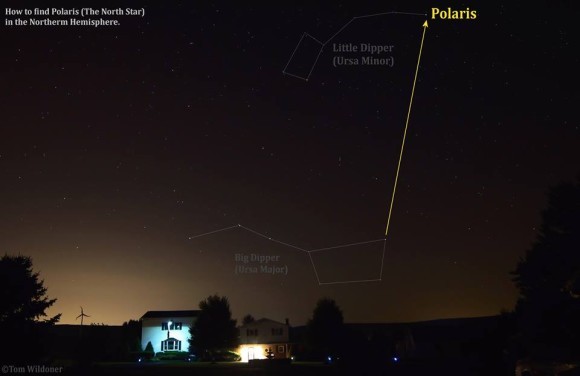Locating Polaris, the North Star, is a fundamental skill for stargazers. The Big Dipper, a prominent asterism in the northern sky, provides a reliable guide to finding this celestial beacon. By drawing an imaginary line through the two outermost stars in the Big Dipper’s bowl (Dubhe and Merak), you can pinpoint Polaris, which marks the end of the Little Dipper’s handle.
Using the Big Dipper as Your Guide to Polaris
The two stars at the outer edge of the Big Dipper’s bowl are often called “The Pointers” because they directly point towards Polaris. This simple method has been used for centuries by navigators, sailors, and outdoor enthusiasts to determine direction. Polaris, while not the brightest star in the sky, is consistently visible in the Northern Hemisphere and remains fixed in its position, unlike other stars that rise and set.
Polaris: The Anchor of the Northern Sky
Polaris sits almost directly above the North Pole, making it appear stationary in the sky. This unique characteristic has made it an invaluable navigational tool throughout history. While other stars appear to rotate around it, Polaris remains fixed, marking true north. It’s important to note that Polaris is only visible in the Northern Hemisphere.
The Big Dipper: An Asterism, Not a Constellation
The Big Dipper, a familiar pattern of seven bright stars, is not a constellation itself but rather an asterism, a recognizable pattern within a larger constellation. It forms part of Ursa Major, the Great Bear. The Big Dipper’s shape resembles a dipper or ladle, with its handle curving away from the bowl.
Finding North with Polaris
Once you’ve located Polaris using the Big Dipper, you can easily determine direction. Facing Polaris means you are facing north. With north established, you can then determine south, east, and west.
Seasonal Visibility of the Big Dipper
The Big Dipper’s visibility varies depending on the time of year and your location. In the Northern Hemisphere, it’s highest in the sky during spring evenings. From northern latitudes, the Big and Little Dippers are circumpolar, meaning they are visible year-round and circle Polaris throughout the night.
Conclusion: A Celestial Connection
The Big Dipper and Polaris share a significant relationship in the night sky. The Big Dipper acts as a pointer, guiding observers to Polaris, the unwavering North Star. Understanding this connection allows anyone to navigate the night sky and find their bearings under the stars. Using the Big Dipper to locate Polaris remains a timeless technique, connecting us to generations of stargazers who relied on these celestial markers for guidance.
